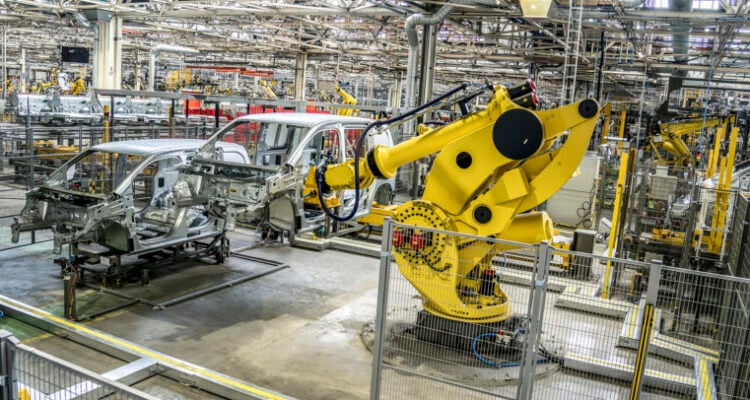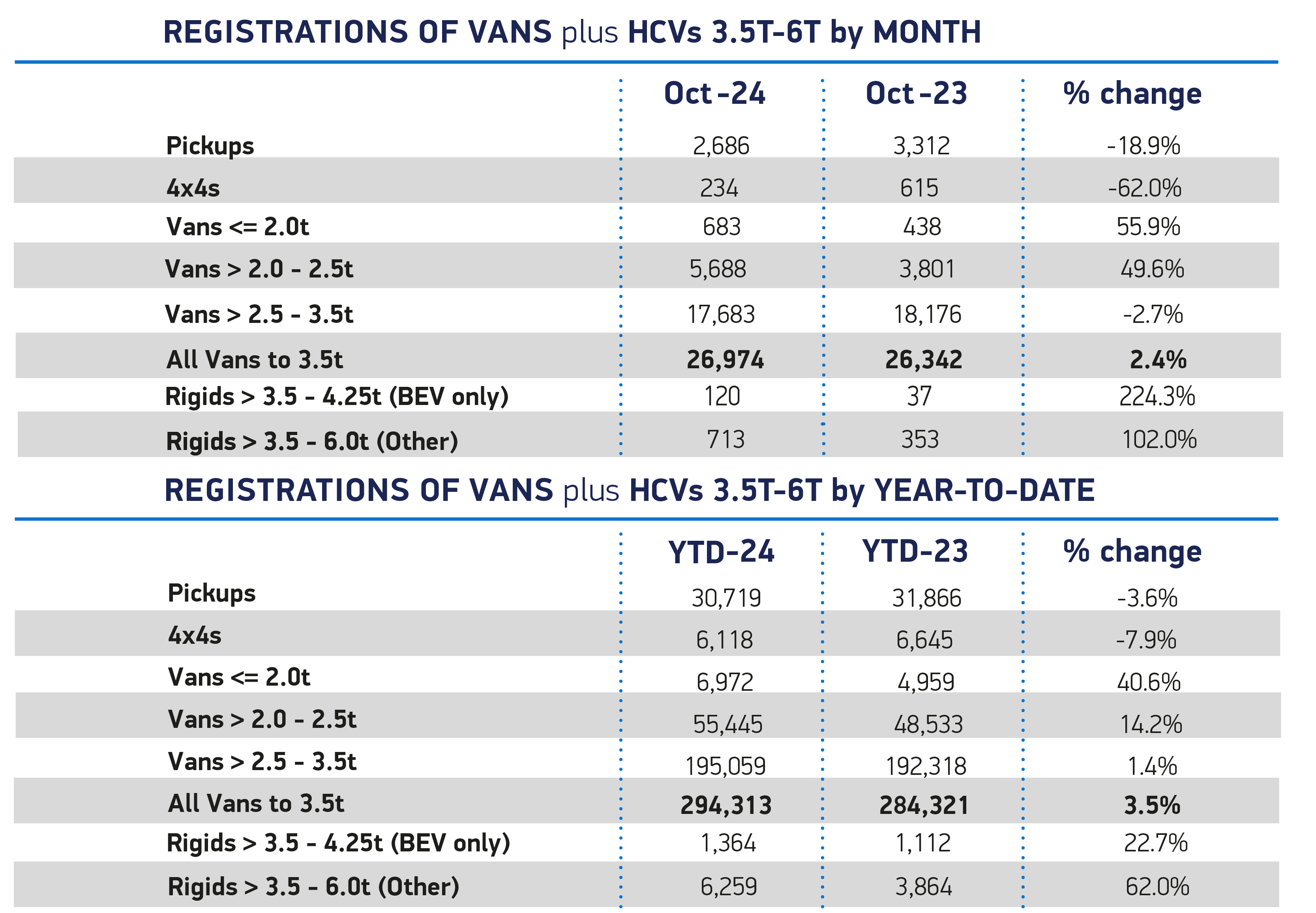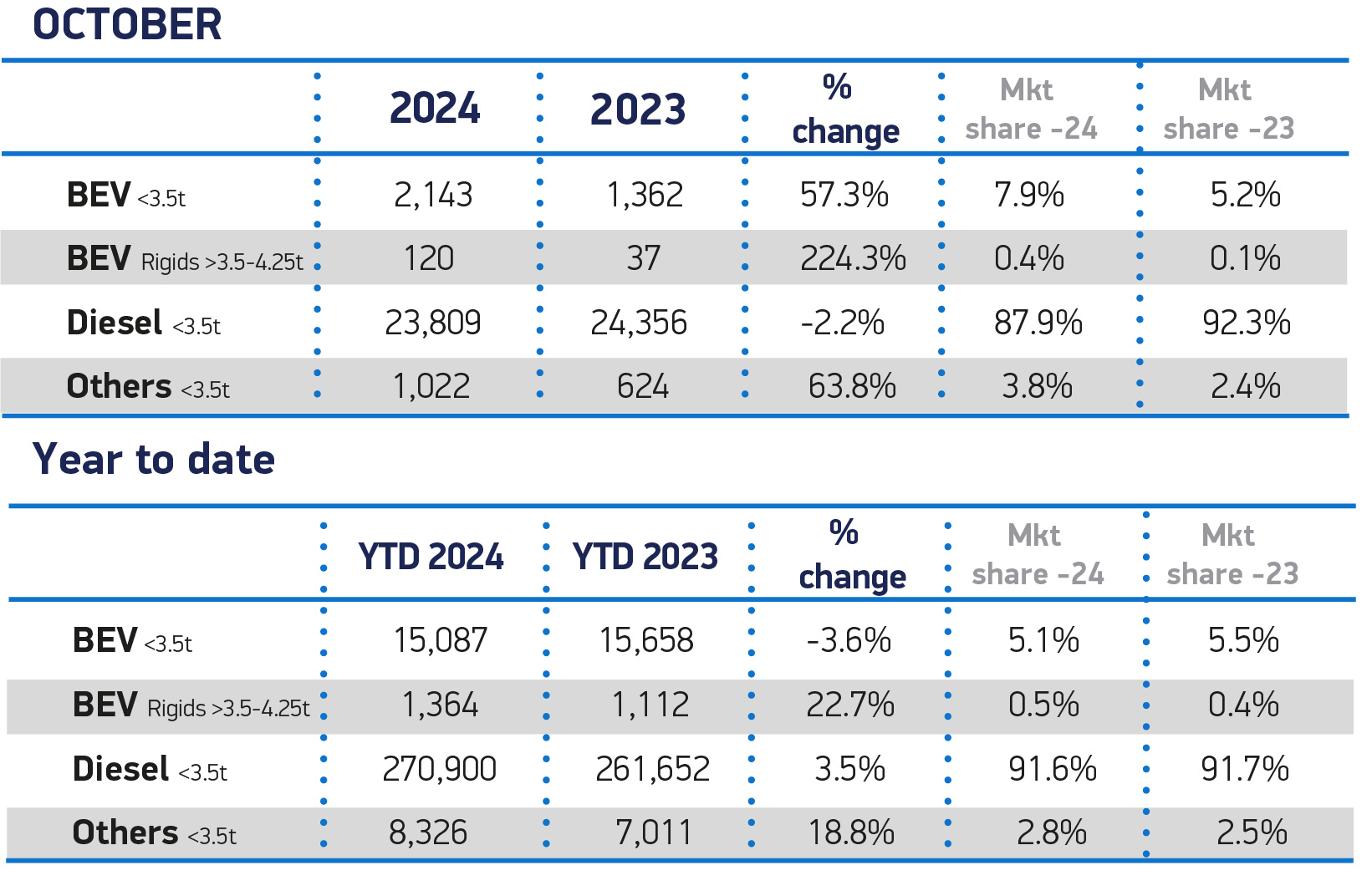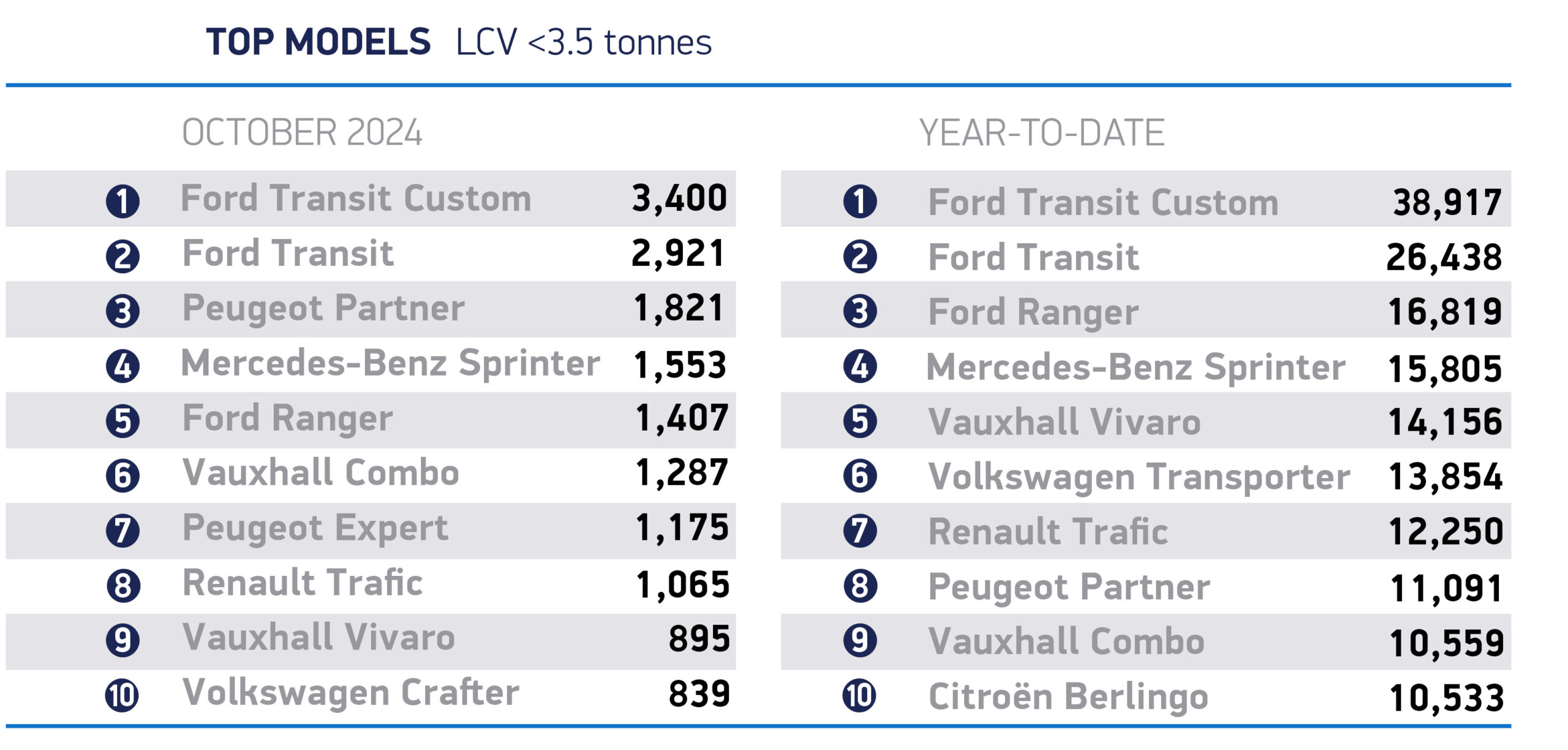The number of new light commercial vehicles (LCVs) joining UK roads grew 2.4% in October with 26,974 new vans, pickups and 4x4s registered, according to the latest figures published today by the Society of Motor Manufacturers and Traders (SMMT). It represents the third consecutive month of overall market growth and the best October in three years.1
The growth was driven by demand for small and medium vans, up 55.9% and 49.6% to 683 and 5,688 units respectively. Uptake of large vans, meanwhile, fell by -2.7% to 17,683 units, though these vehicles still represent the vast majority (65.6%) of the market. Demand for new pickups and 4x4s also declined, by -18.9% and -62.0% to 2,686 and 234 units respectively, after strong growth a year ago.
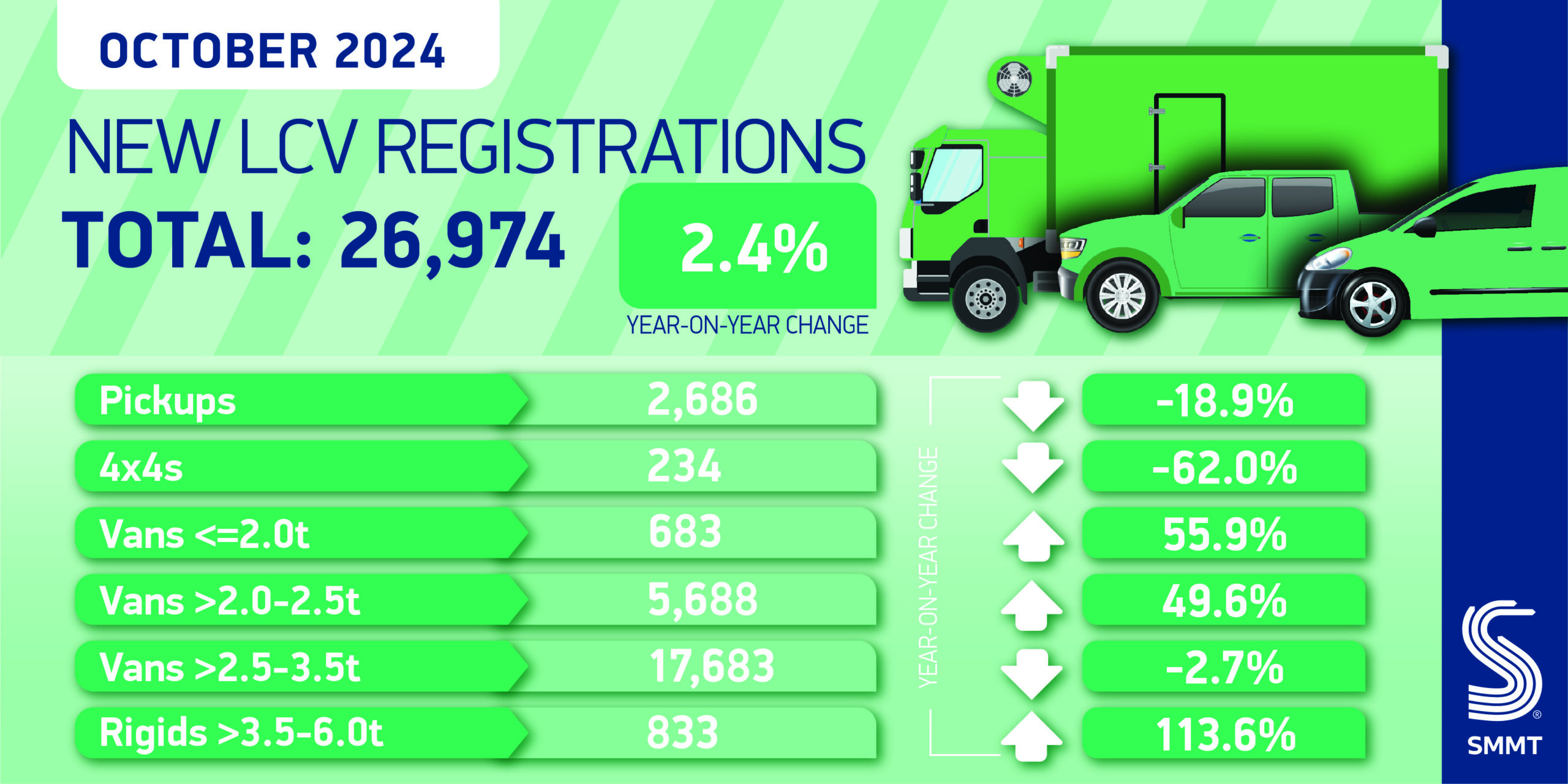 Future demand for new pick-ups, however, is now at serious risk following last week’s Budget announcement to tax double-cabs as cars for benefit in kind and capital allowances purposes beyond April 2025. The change is set to heap further costs on vital industries such as farming, construction, utilities, the self-employed and other businesses for whom these vehicles are an everyday workhorse. The industry urges government to reconsider this move, therefore, and reflect February’s decision by HMRC to avoid harming these sectors with knock-on effects for the wider UK economy.2
Future demand for new pick-ups, however, is now at serious risk following last week’s Budget announcement to tax double-cabs as cars for benefit in kind and capital allowances purposes beyond April 2025. The change is set to heap further costs on vital industries such as farming, construction, utilities, the self-employed and other businesses for whom these vehicles are an everyday workhorse. The industry urges government to reconsider this move, therefore, and reflect February’s decision by HMRC to avoid harming these sectors with knock-on effects for the wider UK economy.2
More positively, demand for new battery electric vans (BEVs) rose for the first time in five months, up 61.8% to 2,263 units, with new registrations of the very greenest models representing 8.4% of the whole new LCV market in October.3 Over the course of the year, however, uptake has fallen by -1.9% compared with the same period last year, accounting for a 5.6% market share – significantly below the level mandated.4
The decline is despite significant manufacturer investment to grow Britain’s BEV choice to more than 30 cutting-edge, competitive models. The extension of the Plug-in Van Grant into the next financial year is welcome and necessary, but further measures are critically needed to give more fleet operators confidence that going electric is commercially viable. In particular, the lack of chargepoint infrastructure suited to the specific needs of vans presents a major barrier for fleet operators considering the switch, and must be addressed quickly.
Mike Hawes, SMMT Chief Executive, said, “The continued growth in demand for new vans is encouraging given this sector is a barometer of the health of Britain’s businesses. Industry has invested huge sums delivering cutting-edge technology, including zero emission vehicles, but low demand raises serious doubt over the ability of the UK to achieve its ambitious green targets. There must be an urgent review of the market, regulation and support in place, else the cost will soon be felt in reduced UK investment, economic growth, jobs and decarbonisation.”
“It has been encouraging to see a modest 2.4% growth in the new LCV market for October, along with the first signs of growth in BEV light commercial registrations in five months” said Sue Robinson, Chief Executive of the National Franchised Dealers Association (NFDA), which represents franchised car and commercial vehicle retailers in the UK.
In October, Light Commercial Vehicle (LCV) dealers registered a total of 26,974 new vans and light commercials, an increase of 2.4% year-on-year.
For 2024, year-to-date figures reveal 294,313 new LCVs are on the road this year, an increase of 3.5%.
The heavier sectors of LCVs saw mixed performances, with 2.0-2.5t sized vans increasing to 5,688 units from 3,801 units, a 49.6% rise. The heavier, and most popular sized vans (2.5-3.5t) saw a decrease to 17,683 units from 18,176 units, a –2.7% contraction. Year-to-date, this LCV size holds a commanding 66% of the market and has seen a 1.4% increase so far this year.
September’s registration figures saw an increase in the number of battery electric commercials registered under 3.5t, up 57.3% to 2,143 units. The volume for EV vans has decreased to 15,087 units this year (-3.6% drop year-to-date), representing 5.1% of the total market share.
Sue Robinson added: “NFDA remains concerned about the upcoming changes to taxation rules for double-cab pickups from April 2025, announced in last week’s Autumn Budget.
“This double-cab market accounts for 10.5% of all light commercials sold this year. Reclassifying these will remove the benefit-in-kind taxation and the ability for businesses to reclaim VAT. This change is likely to significantly reduce sales to sectors such as construction, agricultural and self-employed tradesmen who depend on these to transport their workers on site.
“The Government must invest further to encourage a critical mass of operators to transition to BEV commercial vehicles. Making the shift to electric must be a practical option, yet many fleet customers view the inadequate charging infrastructure as a significant drawback, especially for drivers who frequently work from home.”
1 New LCV registrations, October 2021: 24,420 units.
2 https://www.gov.uk/government/news/update-on-hmrc-double-cab-pick-up-guidance
3 SMMT’s new BEV LCV registration data reflects the Vehicle Emissions Trading Scheme, in which BEVs weighing >3.5-4.25t contribute towards each manufacturer’s target, in addition to those weighing ≤3.5t.
4 New BEV registrations, January to October 2023: 15,658 units.

